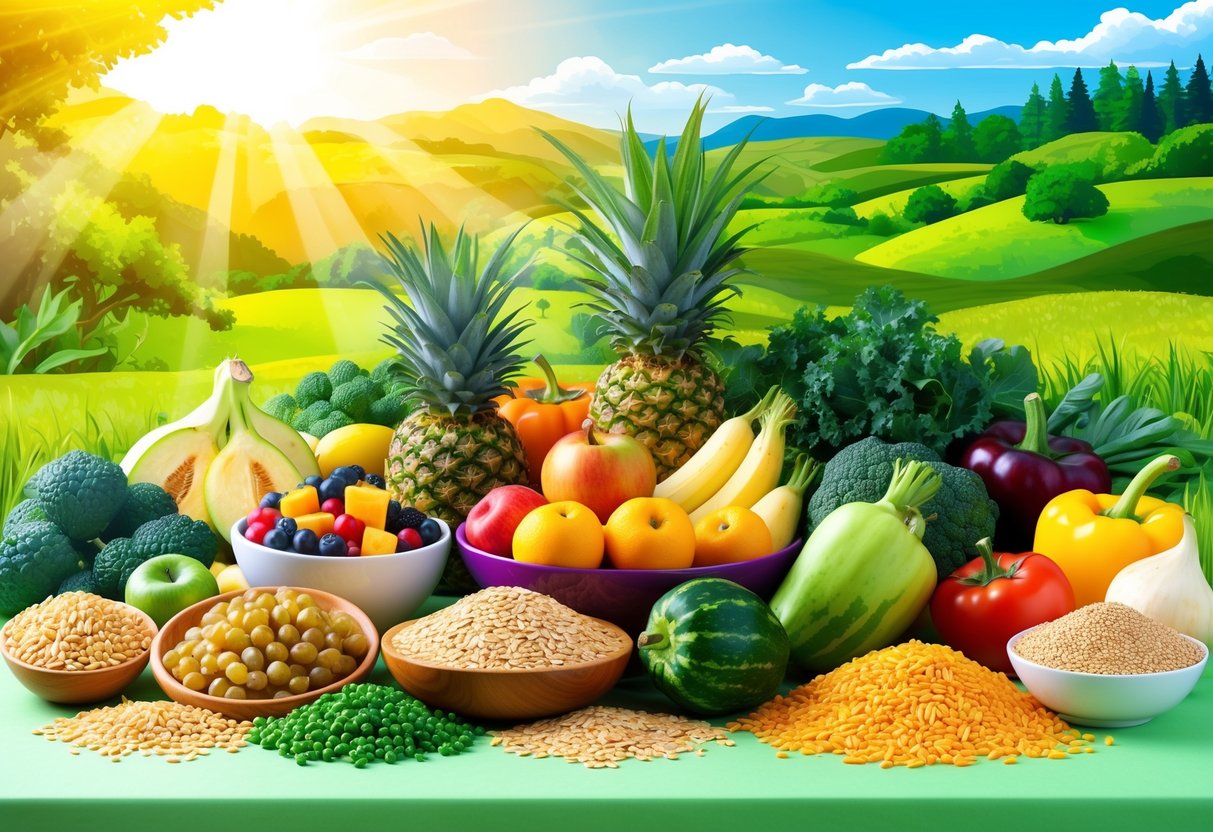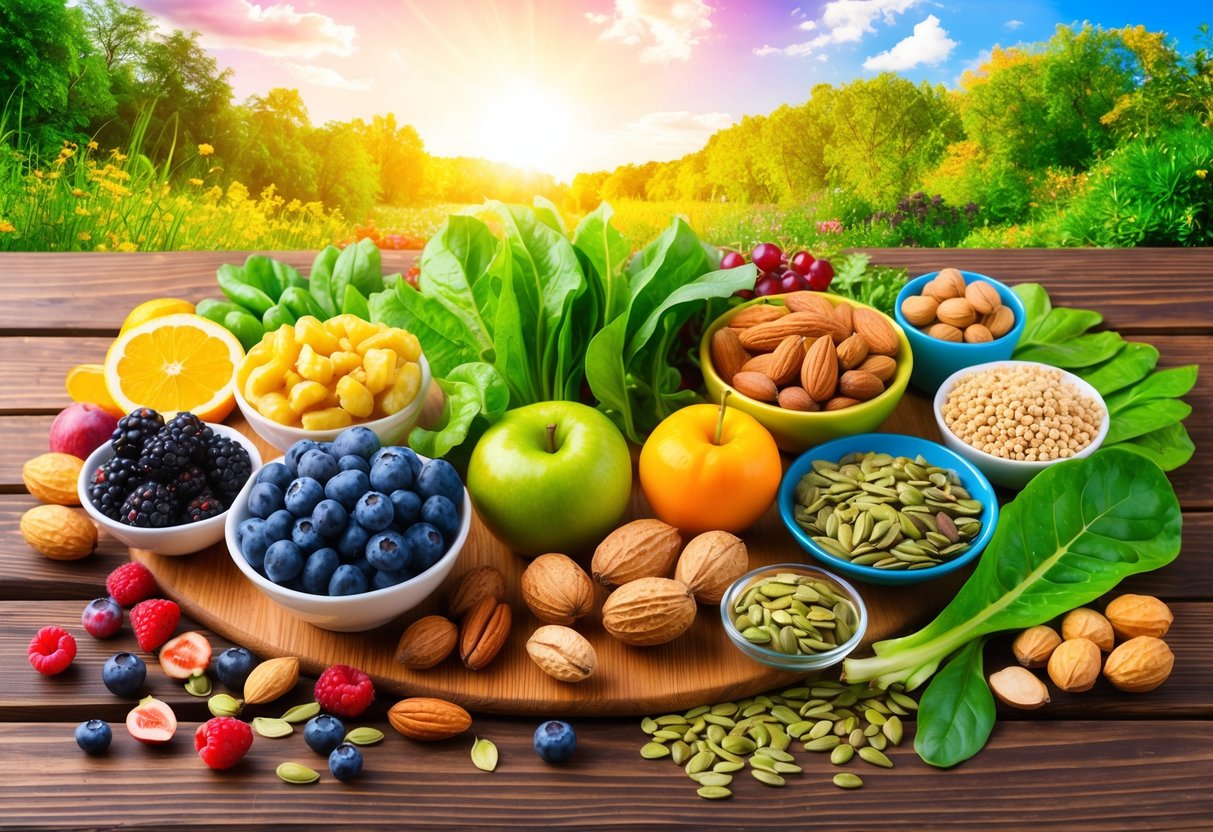
Maximizing Superfood Benefits and Safety

To get the most out of superfoods, it’s important to include them in a diet that is balanced and mindful of portion sizes, potential food allergies, and interactions. Thoughtful choices not only deliver essential nutrients but can also support healthy cholesterol levels, managed blood sugar, and reduced inflammation.
Balanced Diet Guidelines
Superfoods are most effective when part of a varied diet. They should be combined with a range of vegetables, lean proteins, whole grains, and healthy fats.
For example, nutrient-dense greens like kale or spinach are recognized for their role in fighting inflammation and supporting bone health because of their calcium and vitamin K content. Chronic disease prevention often requires eating less processed food and more whole options, such as berries, nuts, and seeds.
These foods support heart health, maintain healthy cholesterol, and help regulate blood sugar when consumed as part of a consistent meal plan. For more details on powerful, everyday superfoods, see these examples of superfoods and healthy recipes.
Recommended Portion Sizes
Eating superfoods in proper amounts helps maximize benefits without excess calorie intake. For most adults, the following are general portion guidelines:
| Superfood | Approximate Serving Size |
|---|---|
| Leafy greens | 1 cup raw or 1/2 cup cooked |
| Blueberries | 1/2 cup fresh or frozen |
| Salmon | 3-4 ounces cooked |
| Nuts | 1 ounce (about a small handful) |
| Greek yogurt | 3/4 to 1 cup |
Incorporating these serving sizes daily, alongside a balanced assortment of foods, helps support anti-inflammatory benefits and overall nutrition. Consistent portions help maintain healthy blood sugar levels and are less likely to lead to calorie excess.
Potential Allergies and Interactions
Some superfoods may trigger allergies or react with medications. Common allergens include nuts, certain seeds, and seafood.
For example, people allergic to tree nuts should avoid almonds and walnuts, even though these nuts are celebrated for heart health. Interactions can also occur with leafy greens that are high in vitamin K, such as spinach and kale, as they may affect blood-thinning medications.
Grapefruit is known to interfere with several cholesterol-lowering and blood pressure medications. Anyone with food allergies or taking prescription drugs should check with their healthcare provider before making significant dietary changes.
Awareness of these potential issues ensures superfoods deliver health benefits without unintended side effects. Those with concerns can review expert advice and nutritious superfood choices from trusted nutrition resources.
Frequently Asked Questions
A wide range of superfoods can support health through their high concentrations of antioxidants, vitamins, minerals, and healthy fats. Common examples include berries, leafy greens, nuts, seeds, and oily fish, which can be easily incorporated into meals, snacks, and recipes.
What foods are considered superfoods and why?
Superfoods usually refer to natural foods like blueberries, kale, salmon, and chia seeds that provide high levels of nutrients and beneficial plant compounds. These foods are recognized for their antioxidant content, ability to combat inflammation, and overall contribution to better health.
Evidence suggests that a diet rich in these foods supports heart health, brain function, and immune performance. Find more options in this list of super healthy foods.
Which superfoods are most effective for weight loss?
Foods like leafy greens, salmon, chia seeds, and berries are popular for weight management due to their nutrient density and fiber content. Leafy greens such as spinach and kale are very low in calories but provide important nutrients and fiber, which helps with satiety.
Salmon is high in protein and healthy fats, aiding metabolism and appetite control. Chia seeds are well known for expanding in liquid, which can help someone feel full longer.
How can superfoods be easily incorporated into daily meals?
Superfoods can be added to smoothies, salads, yogurt, or oatmeal for a quick nutrition boost. For lunch or dinner, leafy greens like spinach and kale can be used in salads or sautéed as side dishes.
Salmon or other oily fish can be grilled or baked and paired with vegetables for balanced meals. It’s helpful to keep items like berries, seeds, and nuts readily available for snacks or simple toppings.
What are some quick and easy recipes that include superfoods?
A smoothie with spinach, blueberries, and chia seeds makes a convenient breakfast or snack. Avocado toast on whole grain bread with pumpkin seeds provides healthy fats and fiber.
Grilled salmon with a side of roasted broccoli combines two powerful superfoods, and salads with kale, berries, and walnuts are packed with nutrients. Find more recipe ideas at this top 10 superfoods list.
What nutritional benefits do the top superfoods offer?
Superfoods like berries provide antioxidants, which protect against cellular damage. Salmon is a leading source of omega-3 fatty acids for heart and brain health.
Leafy greens offer vitamins A, C, K, and minerals like iron and calcium. Nuts and seeds supply healthy fats, plant protein, and dietary fiber for digestive and metabolic health.
You can explore more details about nutritional content at Harvard Health’s overview.
Are there superfoods that are recommended for specific health conditions?
Yes, certain superfoods are recommended for particular health goals.
For heart health, fatty fish like salmon and flaxseeds are often advised due to their high omega-3 content.
For people managing high blood pressure, leafy greens rich in potassium are commonly suggested.
Antioxidant-rich berries are sometimes recommended for cognitive and immune support.
Read about the health benefits of common superfoods at Medical News Today.



